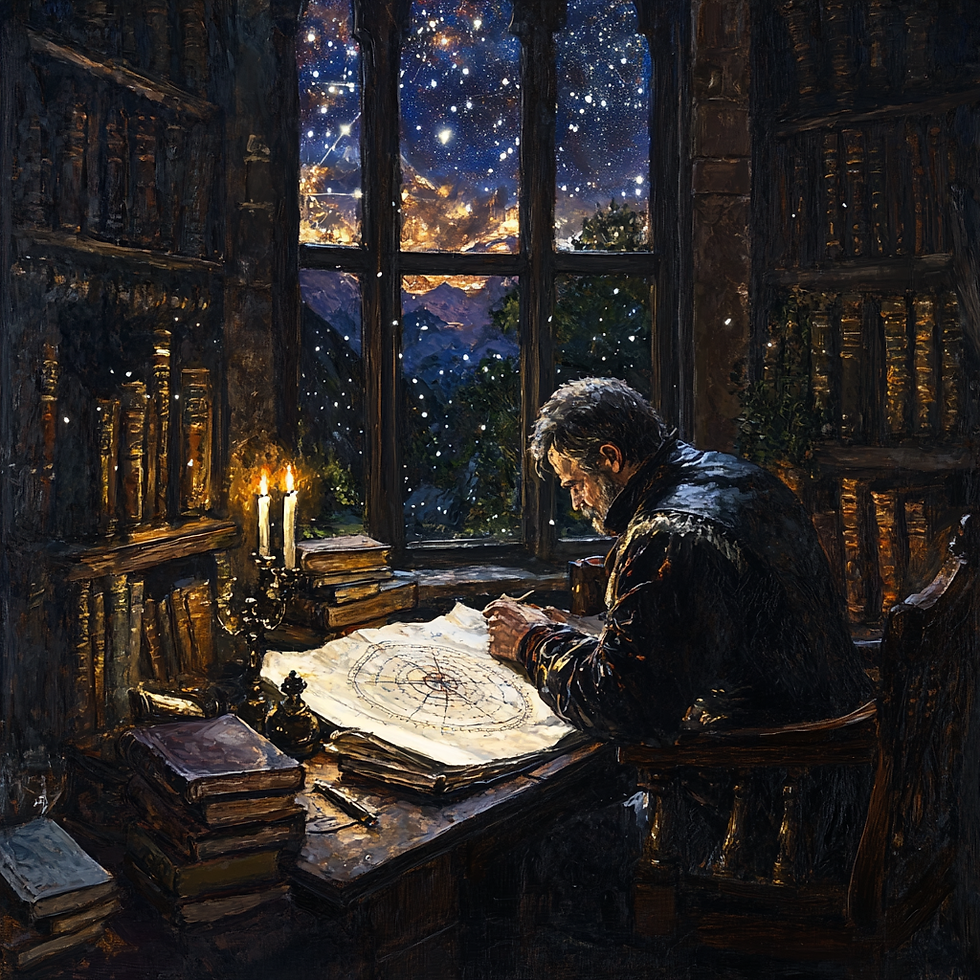When the Sun Was Forbidden: The Church's Trial of Heliocentrism
- Sidney Klock
- Mar 5
- 2 min read
In 1616, the Catholic Church placed a ban on the sky itself. De revolutionibus orbium coelestium, the groundbreaking work of Nicolaus Copernicus, was added to the Index Librorum Prohibitorum, the list of prohibited books. The reason? It advocated heliocentrism, challenging the long-held Aristotelian-Ptolemaic model. The Church's reaction was not merely theological but also political: if Earth was not the center of the cosmos, neither was mankind. Questioning this cosmic hierarchy meant questioning the very structure of ecclesiastical power.

The 17th century marked a transition from medieval scholasticism to the scientific revolution. Copernicus, a Polish clergyman and mathematician, proposed in 1543 that the Earth revolved around the Sun. His idea gained support from figures like Johannes Kepler and Galileo Galilei but also faced fierce opposition. In 1615, Cardinal Robert Bellarmine warned Galileo to treat heliocentrism as a mere mathematical hypothesis. The following year, the Church officially banned Copernicus’ book, requiring modifications and silencing public defense of the theory.
The struggle was not just about astronomy but about authority. Galileo, convinced that empirical observation should outweigh dogma, was tried and condemned in 1633 for supporting the Copernican model. His famous Eppur si muove ("And yet it moves"), even if apocryphal, symbolizes the resilience of scientific thought against repression. Ironically, the prohibition fueled the clandestine spread of Copernican ideas, strengthening their influence in intellectual circles across Europe.
Centuries later, time proved who was right. In 1822, the Church finally allowed the publication of works defending heliocentrism, and in 1835, De revolutionibus was removed from the Index. In 1992, Pope John Paul II acknowledged the errors in Galileo’s trial—a late but symbolic mea culpa. Today, science still fights against dogma and denialism. The history of heliocentrism reminds us that truth can be suppressed, but never erased.
Fun Fact
Although Copernicus published his theory in 1543, the same year he died, he is said to have received a copy of his book only on his deathbed. He reportedly held it in his hands before passing away, never witnessing the revolution it would spark in science.
References
KOESTLER, Arthur. The Sleepwalkers: A History of Man’s Changing Vision of the Universe.
GALILEI, Galileo. Dialogue Concerning the Two Chief World Systems.
Vatican documents on the Index Librorum Prohibitorum.



Comentários